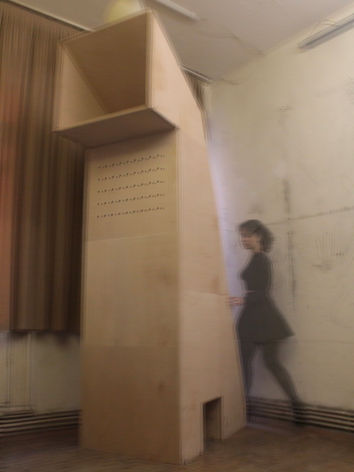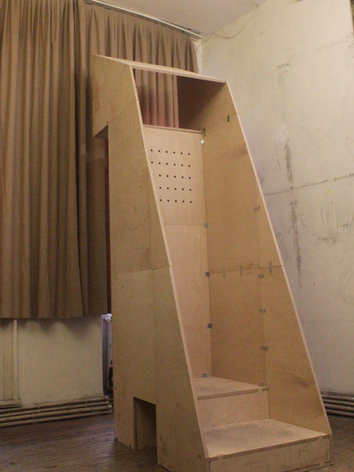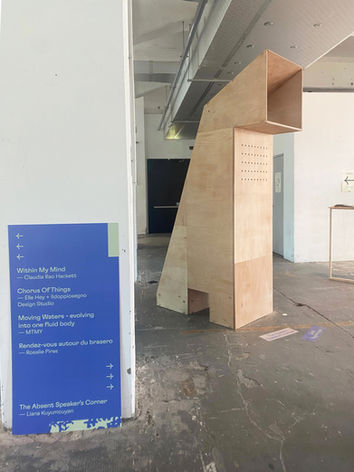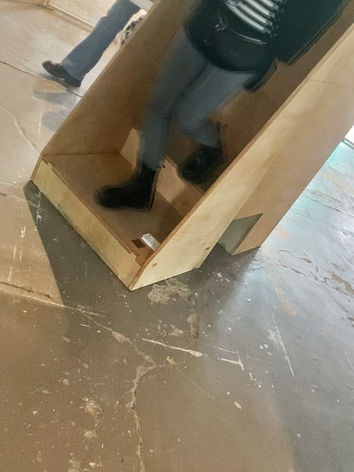The Absent Speaker's Corner

The Absent Speaker’s Corner project was developed in Turkey, where the freedom of expression is under threat, with formal and informal restrictions on public voice, becoming more visible every day, due to the current political scene. With the potential and growing extinction of free speech practices, ideas of minorities, refugees, and others cannot be vocally and/or visually represented, and new generations of “persona non grata”s become inevitable in the public realm. As a product, The Absent Speaker’s Corner aims to provide anonymity to the speaker during the speech.
The project directly references "the speakers’ corner," which started to be practiced in Hyde Park, London, in 1855. The same practice was carried to Istanbul during the Gezi Park protests in 2013 but could not be sustained due to constant police intervention. Regarding this, the project aims to create a space where the speaker is not visible while they express their ideas, ensuring the temporary anonymity of the speaker.
The Absent Speaker’s Corner aims to erase the importance of the image of the body while giving a speech. The object is designed as the secure version of the speaker’s corner, giving the speaker invisibility during the speech, that is why, it takes confessionals as a reference: Similar to the confession moment, the person's or the priest's identity becomes unimportant. Using this idea of temporary invisibility, The Absent Speaker’s Corner allows
the audience to listen to the speaker without seeing them. In this way, the information is perceived as it comes from “the unseen.” This temporary invisibility aims to create a moment of interaction between different social groups, ages, genders, or cultural backgrounds, without having any preconceptions that outlooks can cause, and also, gives the comfort to the person to speak up anonymously.
Confessionals serve as designated spaces where individuals can privately confess their sins to a priest, who acts as a spiritual guide. The confessor stands or sits behind a screen or grille, obscuring their identity from the priest, who remains on the other side. This arrangement facilitates anonymity and encourages candid disclosure, fostering a sense of confidentiality and trust crucial to the sacrament.
The confessional as an object enters churches after the mid-1500s, by the initiative of Cardinal Carlo Borromeo of Milan. Before Borromeo, confessions occurred in ad hoc settings. Borromeo catalyzed a systematic deployment of confessionals, mandating their installation in every parish in Milan and specifying their design features, including the use of grilles to ensure separation between confessor and penitent.
Thus, the confessional, while serving as a conduit for spiritual reconciliation, also functioned as a mechanism for social control.
The speaker's corner serves as a symbol of free speech and public debate. It was first located in London's Hyde Park, dating back to the mid-19th century, when the Reform League demanded the right to assemble and speak freely in Hyde Park. In 1872, the government designated a specific area within the park where people could gather to express their opinions without fear of prosecution.
Since then, the speaker's corner has become a platform for individuals from various backgrounds to voice their thoughts on politics, religion, social issues, and more in several countries in Europe and some states in the USA. It has served as a space for activists, preachers, performers, and ordinary citizens to engage in lively discussions, debates, and impassioned speeches.
Concept and design: Liana Kuyumcuyan
Mentor: Onur Atay
Photos: Mert Öztekin
This project was first developed in 2019-2020 at Design Academy Eindhoven, Social Design masters department coordinated by Jan Boelen, designed under the guidance of Jesse Howard, Jon Stam, Henriette Waal.
-
The project was exhibited at BASE Milano as a part of the exhibition called The Convivial Laboratory between 15-21 April 2024, as a part of Milano Design Week 2024.

















